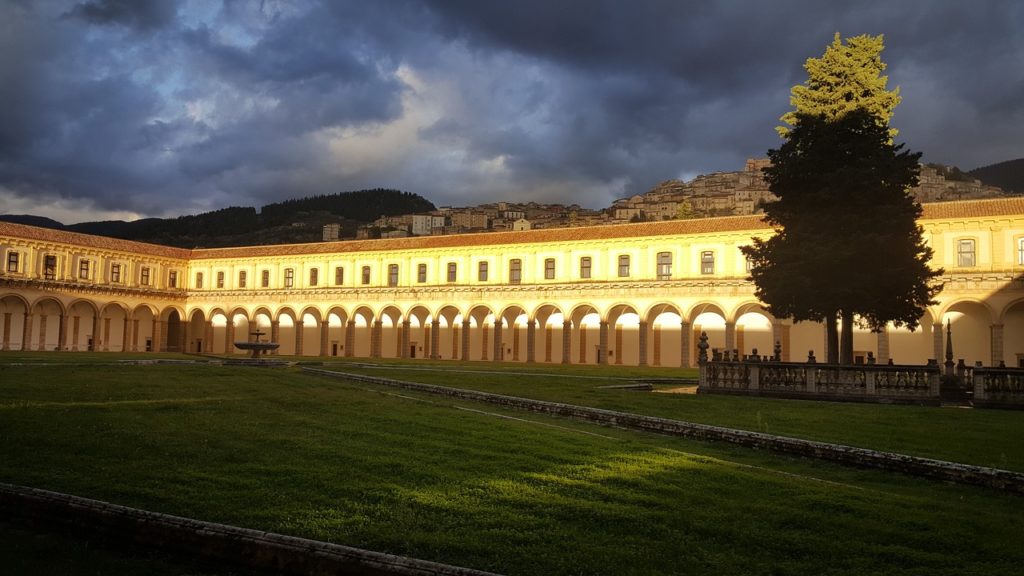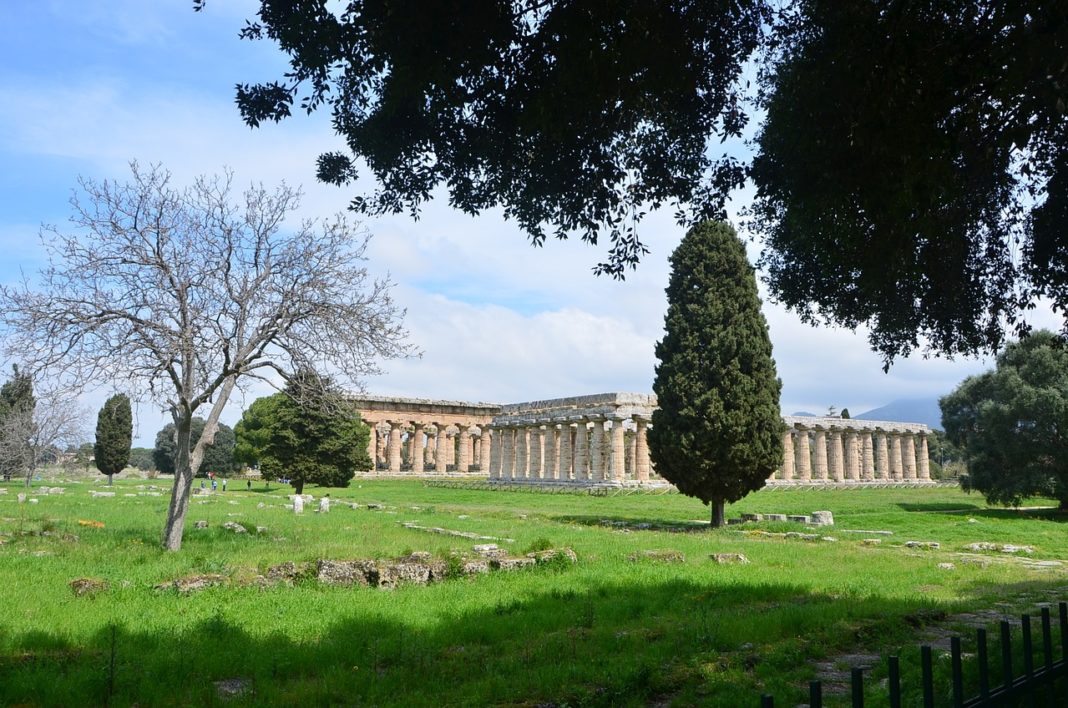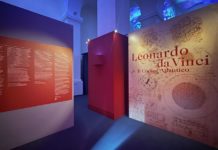Un’ampia rassegna sul mondo archeologico. Torna da giovedì 2 a domenica 5 novembre la XXV edizione della Borsa mediterranea del turismo archeologico all’ombra dei templi di Paestum, patrimonio dell’umanità.
L’iniziativa si svolge su oltre quattromila mq nell’ex tabacchificio Cafasso, l’attuale Next, location di archeologia industriale, scelta nel 2021, dopo aver vagato, negli anni precedenti, in strutture alberghiere, distanti dall’area archeologica.
La Bmta 2023 si presenta con sedici eventi di approfondimento, conferenze e divulgazione di temi inerenti e fruizione, gestione, valorizzazione del patrimonio archeologico. Nei quattro giorni della rassegna, spazio alla promozione culturale e al business turistico.
Un format collaudato con collaborazioni di organismi internazionali quali Unesco, Unwro e Iccrom, 160 espositori con circa 20 paesi esteri e per la prima volta ci saranno l’Agenzia italiana per la cooperazione allo sviluppo del ministero affari esteri e la Città del Vaticano con la Pontificia commissione di archeologia sacra.
Nelle precedenti edizioni, hanno partecipato, come ospiti d’onore con testimonianze di ricchi tesori: Egitto, Marocco, Tunisia, Siria, Francia, Algeria, Grecia, Libia, Perù, Portogallo, Cambogia, Turchia, Armenia, Venezuela, Azerbaigian.
Unico salone espositivo dedicato al turismo archeologico e prima mostra internazionale di tecnologie virtuali, ideato e organizzato dalla società leader di Ugo Picarelli finalizzato alla diffusione di prodotti turistici specifici e approfondimento su temi inerenti tutela, l’utilizzo e la valorizzazione dei beni culturali.
Opportunità di business i workshop con i buyers esteri. Presenti istituzioni, enti, regioni, organizzazioni di categoria, associazioni professionali e culturali, aziende e consorzi turistici, società di servizi, case editrici.
L’edizione 2023 assume particolare importanza perché celebra il venticinquesimo anniversario, condividendolo con il Parco Archeologico di Paestum e Velia e la Certosa di Padula, che nel 1998 furono inseriti nella lista del patrimonio mondiale dell’Unesco nell’ambito del riconoscimento attribuito al Parco Nazionale del Cilento e Vallo di Diano, oggi anche Alburni.
Occasione per addetti ai lavori e visitatori godere del mondo antico tra i templi più interessanti di Paestum: Hera o Basilica e Tempio di Nettuno o Poseidone. e il Tempio di Atene. Oltre ai templi altri monumenti di interesse storico ed archeologico sono presenti nella città della Magna Grecia, la tomba del tuffatore; il Museo Nazionale (in corso restyling) e l’anfiteatro romano.
A poca distanza da Poseidonia la città di Velia, secondo alcuni sede della scuola di filosofia di Parmenide e Zenone e di una prestigiosa scuola medica le cui tradizioni e conoscenze sono considerate le radici della scuola medica Salernitana. La Certosa di San Lorenzo a Padula, famosa per magnificenza architettonica e ricca di tesori artistici.
Il patrimonio archeologico d’Italia è il più vasto, variegato e diffuso del mondo. La Campania vanta ben cinque siti riconosciuti dall’Unesco, oltre naturalmente siti minori ma altrettanti interessanti della zona Vesuviana e Costa Flegrea
In questi ultimi anni l’incontro tra le varie culture del Mediterraneo è cresciuto in modo esponenziale. L’idea di istituire, nel 1998 una Borsa del turismo nella cittadina, in provincia di Salerno, dove fino al V secolo a.C. si svolgeva un florido emporio commerciale, è risultata vincente.

Paestum/ Archaeological tourism bourse comes back: the star is the Mediterranean with its cultures
An extensive festival dedicated to the archaeological world. Back from Thursday, November 2nd to Sunday, November 5th, is the XXVth edition of the Mediterranean Fellowship of Archaeological Tourism in the shadow of the temples of Paestum, a world heritage site.
The initiative takes place on more than four thousand square meters in the former Cafasso tobacco factory, the current Next, location of industrial archaeology, chosen in 2021, after wandering, in previous years, in hotel facilities, far from the archaeological area.
The Bmta 2023 presents itself with sixteen in-depth events, conferences and popularization of issues related to and fruition, management, and enhancement of the archaeological heritage. In the four days of the event, space for cultural promotion and tourism business.
A tried and tested format with collaborations of international bodies such as Unesco, Unwro and Iccrom, 160 exhibitors with about 20 foreign countries and for the first time there will be the Italian Agency for Development Cooperation of the Ministry of Foreign Affairs and the Vatican City with the Pontifical Commission for Sacred Archaeology.
In previous editions, Egypt, Morocco, Tunisia, Syria, France, Algeria, Greece, Libya, Peru, Portugal, Cambodia, Turkey, Armenia, Venezuela, and Azerbaijan participated as guests of honor with testimonies of rich treasures.
Unique exhibition dedicated to archaeological tourism and first international expo of virtual technologies, conceived and organized by Ugo Picarelli’s leading company, aimed at the dissemination of specific tourism products and in-depth study of issues related to the protection, use and valorization of cultural heritage.
Business opportunities workshops with foreign buyers. Institutions, entities, regions, trade organizations, professional and cultural associations, tourism companies and consortia, service companies, publishers will be present.
The 2023 edition will be particularly important because it will be celebrating its 25th anniversary, sharing it with the Archaeological Park of Paestum and Velia and the Certosa of Padula, included in the UNESCO World Heritage List in 1998 as part of the recognition given to the National Park of Cilento and Vallo di Diano, now also Alburni.
Opportunity for insiders and visitors to enjoy the ancient world among the most interesting temples of Paestum: Hera or Basilica and Temple of Neptune or Poseidon. and the Temple of Athens. In addition to the temples, other monuments of historical and archaeological interest can be found in the city of Magna Graecia, the tomb of the diver; the National Museum (under restyling) and the Roman amphitheater.
Not far from Poseidonia is the city of Velia, which according to some is the site of the school of philosophy of Parmenides and Zeno and of a prestigious medical school whose traditions and knowledge are considered the roots of the Salerno Medical School. The Charterhouse of San Lorenzo in Padula, famous for its architectural splendor and rich in artistic treasures.
Italy’s archaeological heritage is the largest, most varied and widespread in the world. Campania boasts no less than five sites recognized by UNESCO, in addition to smaller but equally interesting sites in the Vesuvius area and on the Phlegrean coast.
In recent years, the meeting between the different cultures of the Mediterranean has grown exponentially. The idea of creating a tourist exchange in 1998 in the town of Salerno, which was a flourishing commercial center until the 5th century B.C., proved to be a winner.
Read more at
https://www.borsaturismoarcheologico.it/










